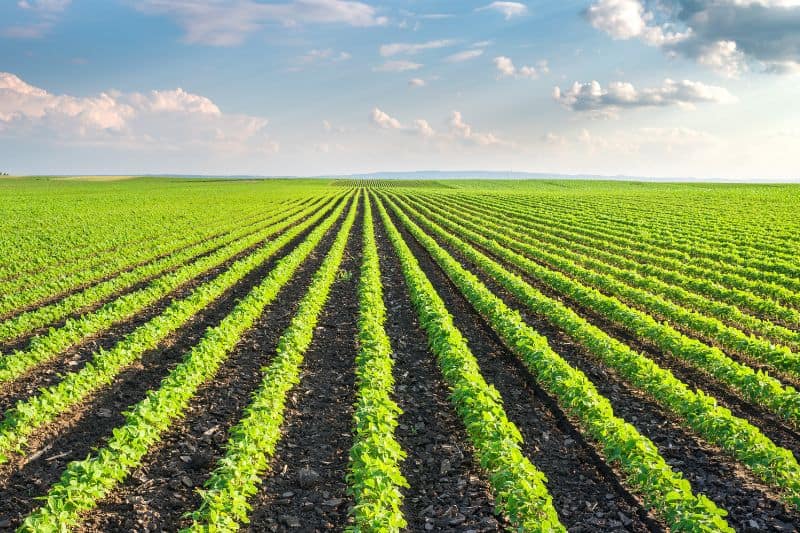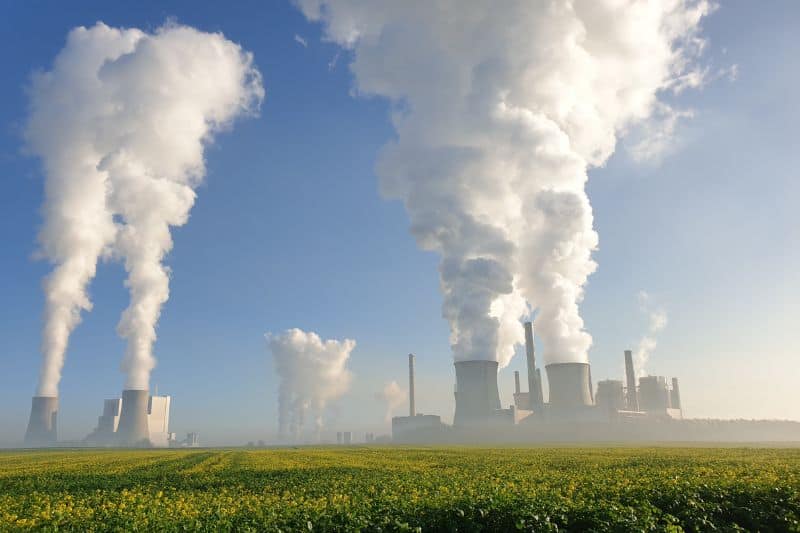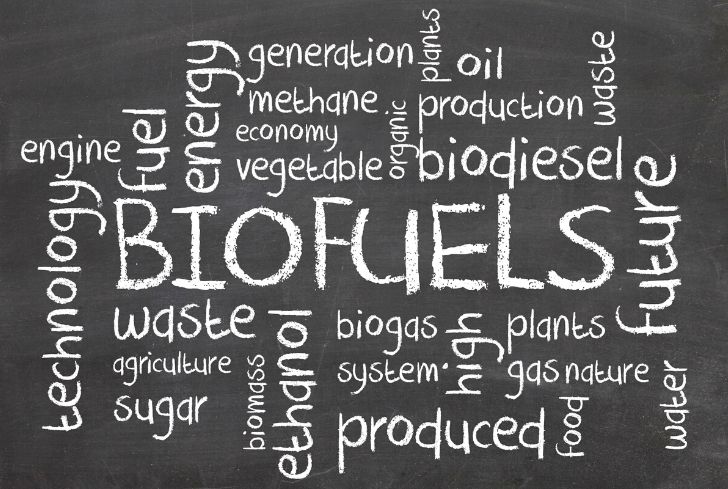Biofuels, in the most straightforward terms, refer to fuels extracted from biomass — basically plants, algae, or animal waste.
We’ve got several types of biofuels, but the most commonly extracted and used one is Bioethanol or Ethanol and Biodiesel.
This biofuel is blended with gasoline and can be used for many purposes, including as an alternative fuel for your car.
Even more impressive, biofuels come from renewable sources, can be grown anywhere, and have lower carbon emissions than fossil fuels.
Now, biofuels not only help a struggling economy by providing jobs but also helps reduce greenhouse gases to much extent by emitting less pollution.
We should increase our development of alternative fuels, taking advantage of renewable resources, like using corn and sugar to produce ethanol or soybeans to produce biodiesel.
~ Bobby Jindal
As crude oil prices rise daily, most people switch to biofuels to save money and reduce their dependence on oil.
That’s because, unlike crude oil, biofuels are produced from wheat, corn, soybeans, and sugarcane, which can be produced repeatedly on demand, so they are sustainable.
But then, that’s not to say everything about biofuels is positive. Like their counterparts, biofuels have their good and bad side. Let’s look at some of the advantages and disadvantages of using these fuels.
And as usual, we begin with the good side.
Various Advantages of Biofuels
As gas prices rise and global warming becomes more pervasive, more people are using biofuels as a way to save money and decrease their consumption of fossil fuels.
The following are the benefits of using biofuels:
1. Efficient Fuel
Biofuel is made from renewable resources and is relatively less flammable than fossil diesel. Plus, it has significantly better lubricating properties than its counterpart.
Even more, biofuel causes less harmful carbon emissions compared to standard diesel and can be manufactured from various materials such as sugarcane, corn, etc.
As such, the cost-benefit of using biofuel is much higher, making it a much more efficient option than fossil fuels.
2. Cost-Benefit
Currently, biofuels cost the same price in the market as Gasoline, although there’s a likelihood that their increasing demand could induce the need for more efficient extraction methods, making them much cheaper in the future.
According to the RFA (Renewable Fuels Association) February 2019 Ethanol Industry Outlook report, “Ethanol remains the highest-octane, lowest-cost motor fuel on the planet.”
Additionally, in 2019, the U.S. Department of Energy (DOE) allocated $73 million for 35 bioenergy research and development (R&D) projects.
With goals such as reducing drop-in biofuel costs, it aims to “enable high-value products from biomass or waste resources” and reduce the cost of producing biopower. So, the use of biofuels will be less of a drain on the wallet.
But even with the current price range similar to fossil fuels, the overall cost-benefit of using biofuels is much higher than the alternative. For instance, they are cleaner fuels, which means they produce fewer emissions on burning.
3. Durability of Vehicles’ Engine
Biofuels are adaptable to current engine designs and perform very well in most conditions. It has higher cetane and better lubricating properties than fossil fuels. Even more, the engine’s durability increases when biodiesel is used as a combustible fuel.
But that’s not all. With biofuel, there is also no need for engine conversion, and that’s because it keeps the engine running longer, requires less maintenance, and reduces overall pollution check costs.
And, of course, engines designed to work on biofuels produce less emission than other diesel engines.
4. Easy to Source
Gasoline is refined from crude oil, which happens to be a non-renewable resource. Although current reservoirs of gas will sustain for many years, they will end sometime in the near future.

That’s unlike biofuels, which are made from many different sources, such as manure, crop waste, other byproducts, algae, and plants grown specifically for fuel.
5. Renewable
Most fossil fuels will get exhausted and end up in smoke one day. But sources like manure, corn, switchgrass, soybeans, and waste from crops and plants are renewable and will never run out.
This makes the use of biofuels efficient in nature since these crops can be replanted again and again.
6. Reduce Greenhouse Gases
Studies suggest that biofuels reduce greenhouse gases by up to 65 percent. Fossil fuels, when burnt, produce large amounts of greenhouse gases, i.e., carbon dioxide, in the atmosphere.
These greenhouse gases trap sunlight, and the burning of coal and oil increases the temperature; all this causes global warming.
But the same can’t be said of fuels extracted from biomass. In other words, biofuels don’t produce greenhouse gases, so people worldwide are gradually switching to them.
7. Economic Security
Not every country has extensive reserves of crude oil. As such, most countries must import oil, putting a massive dent in the economy.
But with more people shifting towards biofuels, these countries can reduce their dependence on fossil fuels.
Biofuel production increases the demand for suitable biofuel crops, boosting the agriculture industry. Plus, fueling homes, businesses, and vehicles with it is less expensive than fossil fuels.
More jobs will be created with a growing biofuel industry, which will keep our economy secure by creating opportunities.
8. Reduce Dependence on Foreign Oil
While locally grown crops have reduced the nation’s dependence on fossil fuels, experts believe solving our energy needs will take a long time.
As crude oil prices are sky-high, we need more alternative energy solutions to reduce our dependence on fossil fuels. This can be accomplished by buying into the idea of using biofuels.
9. Lower Levels of Pollution
Since biofuels can be made from renewable resources, they cause less pollution to the planet. However, that is not the only reason why the use of biofuels is being encouraged.
When burnt, biofuels release lower carbon dioxide levels than standard diesel, meaning their use may significantly reduce Particulate matter (PM) emissions.
Sure, the production of biofuels creates carbon dioxide as a byproduct. But then, this gas is again used up by the growing plants that are eventually converted into biofuel. This allows it to become something close to a self-sustaining system.
Besides, biofuels are biodegradable, reducing the possibility of soil and underground water contamination during transportation, storage, or use.
Disadvantages of Biofuels
Now that we’ve looked at the positive side of using biofuels let’s switch gears and examine the other side of the coin.
1. High Cost of Production
Even with all the benefits of biofuels, they are pretty expensive to produce in the current market. Currently, the interest and capital investment in biofuel production is fairly low but can match demand.
Generally, biofuels are more expensive to produce than fossil fuels on a per-unit energy basis. This is due to the fact that biofuels are derived from renewable resources, such as crops and waste materials, which are more expensive to grow and process than fossil fuels.
If the demand increases, a rise in supply becomes a long-term operation that will be expensive. Such a disadvantage is still preventing the use of biofuels from becoming more popular.
2. Monoculture
Monoculture refers to the practice of producing the same crops year after year rather than producing various crops through a farmer’s fields over time.
While this might be economically attractive for farmers, growing the same crop yearly may deprive the soil of nutrients that are put back into the soil through crop rotation.

There are many problems with growing a single crop over large tracts of land. First, growing only one crop changes the environment regarding the food available to pests, and they are free to destroy an entire crop.
Secondly, we could treat the pests mentioned above with pesticides, but a few of those will inevitably be resistant to the chemicals we use to kill them, and that can inhabit a single field of crops.
The next problem comes with genetic engineering when we decide to modify the crop to resist the pest without the need for pesticides.
It is still likely that at least a few pests aren’t affected by the modification, and the problem remains.
Thus, biodiversity is the key to healthy crops worldwide, which means having many different plants and animals around.
3. Use of Fertilizers
Biofuels are produced from crops that need fertilizers to grow better. The downside of using fertilizers is that they can harm the surrounding environment and cause water pollution.
Fertilizers contain nitrogen and phosphorus and can be washed away from soil to nearby lakes, rivers, or ponds.
4. Shortage of Food
Biofuels are extracted from plants and crops that have high levels of sugar in them. However, most of these crops are also used as food crops.
Even though plant waste can be used as raw material, the requirement for such food crops will still exist. It will take up agricultural space from other crops, which can create a number of problems.
Using existing biofuel land may not cause an acute food shortage; however, it will definitely pressure the current crop growth.
One major worry people face is that the growing use of biofuels may also mean a rise in food prices.
Some people prefer using algae, which grows in inhospitable regions and has a limited impact on land use. However, the problem with algae is it uses a lot of water.
5. Industrial Pollution
The carbon footprint of biofuels is less than the traditional forms of fuel when burnt. However, the process by which they are produced makes up for that. Production is largely dependent on lots of water and oil.

Large-scale industries meant for churning out biofuel are known to release large amounts of emissions and cause small-scale water pollution.
6. Water Misuse
Large quantities of water are required to irrigate the biofuel crops, which may strain local and regional water resources if not managed wisely.
Mass quantities of water are used to produce corn-based ethanol to meet local demand for biofuels, which could put unsustainable pressure on local water resources.
7. Future Rise in Price
Current technology being used to produce biofuels is not as efficient as it should be. Scientists are engaged in developing better means by which we can extract this fuel.
However, the cost of research and future installation means that the price of biofuels will see a significant spike.
Currently, the prices are comparable with gasoline and are still feasible. Constantly rising prices may make the use of biofuels as harsh on the economy as the rising gas prices are doing right now.
8. Changes in Land Use
Land used to grow biofuel feedstock has to be cleared of native vegetation, which leads to ecological damage.
The damage is caused by destroying local habitats, animal dwellings, and micro-ecosystems and reducing the overall health of the region’s natural resources.
The native forest is always better at removing CO2 from the atmosphere than a biofuel feedstock partly because the CO2 remains trapped and is never released by burning as with fuel stock, and hence Carbon debt is created.
Sometimes we need to deforest an area, prepare it for farming, and plant the crop; this produces greenhouse gases and puts the region at a net positive GHG production even before a single biofuel is produced.
Estimates have shown that deforesting native land can actually produce a carbon debt that can take up to 500 years to repay.
Finally, changing land to an agricultural status almost always means fertilizers will be used to get the most yields per area. This leads to problems of water pollution and other agricultural pollution.
Thus, creating more farmland will likely damage waterways and energy used in treatment plants and other mitigation strategies, which lead to an even larger carbon debt.
9. Global Warming
Burning biofuels, mostly hydrogen and carbon, produce carbon dioxide, contributing to global warming.
It is true that biofuels produce less GHG emissions than fossil fuels, but that can only serve to slow global warming and not stop or reverse it.
Therefore, biofuels may be able to help ease our energy needs, but they won’t solve all of our problems. It can only be a short-term substitute as we invest in other technologies.
10. Weather Problem
Biofuel is less suitable for use in low temperatures. That’s because it’s more likely to attract moisture than fossil diesel, which creates problems in cold weather.
It also increases microbial growth in the engine that clogs the engine filters.
References:







